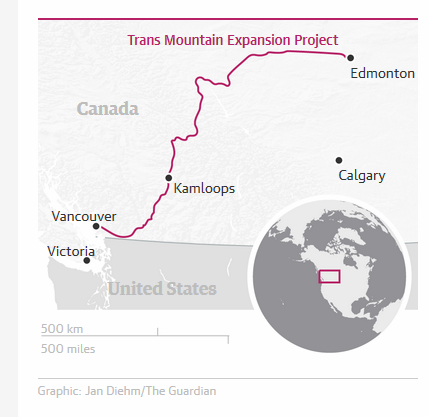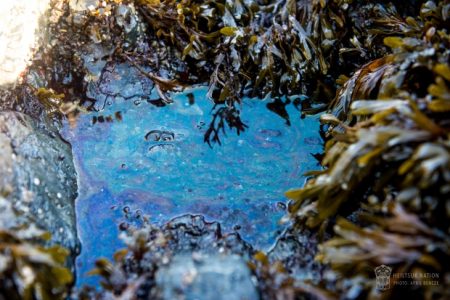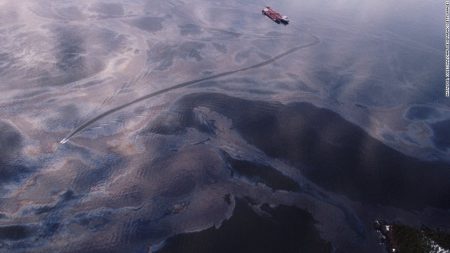December 2, 2016 – In my country we have just witnessed the approval of two oil pipelines, one a refurbishment and rebuild (Enbridge Line 3), the other a twinning pipeline expansion along an existing route (Trans-Mountain). The justification for approval in the face of climate change was stated by Prime Minister Trudeau as follows: “More oil is going to be transported by rail if we don’t build pipelines. That is less economic, and more dangerous for communities, and is higher in terms of greenhouse gas emissions than modern pipelines would be.” The oil from Trans-Mountain will add 23 to 28 megatons of carbon pollution to the atmosphere and increase oil tanker traffic from British Columbia’s lower mainland by a factor of seven.
Other carbon policies were announced in the last two months with a national price on carbon pollution to begin at $10 CDN per ton and rise to $50 over the next five years. That price on carbon has been set whether a province or territory implements its own carbon reduction strategy or not. With the majority of provinces by population already pricing carbon the federal government is now asking or compelling the rest of the country to come aboard the carbon reduction train. That train is committed federally to reduce greenhouse gas (GHG) emissions by 30% from 2005 levels by the year 2030.
So the country will more than double its capacity in terms of delivering oil to U.S. and world markets. Every barrel of oil in production will add to Canada’s carbon deficit. What will offset this increased Canadian carbon contribution? Policies and climate action plans have been announced. Alberta, the heart of Canada’s oil country, plans to eliminate all coal-fired power plants and put a hard cap on oil sands emissions by 2030. Other provinces like Nova Scotia have sought and received waivers giving them the right to continue producing energy using coal providing they make offsetting investments in renewable energy and energy conservation. In Ontario and Quebec cap and trade will use market rules to reduce carbon pollution. In British Columbia a $30 per ton carbon tax will remain in force. It is indeed a patchwork of GHG reduction programs in Canada that is beginning to resemble a plate full of spaghetti. To this add the news south of the border with the President Elect, Donald Trump, planing to approve the Keystone XL pipeline from Alberta’s oil sands to U.S. refiners on the Texas coast, meaning even more production capacity for Alberta’s oil sands and a greater carbon deficit.
It is understandable that the Canadian government sees the necessity to build a pipeline to a port within Canada giving Alberta’s energy industry the opportunity to no longer be limited to the United States as a customer for its products and allowing the province to reverse its deep economic slump. The approval of Trans-Mountain means the United States will no longer be the sole customer for Alberta oil which is sold to the Americans at considerable discount. Trans-Mountain means 900,000 barrels of oil per day will be sold to Asian and other global markets at world price.
In the weeks prior to the pipeline approval the federal government announced billions in funding for increased environmental protection for the Pacific coastline to deal with oil spill readiness. That was a pretty good hint that Trans-Mountain was going to be approved. But putting money into oil spill cleanup readiness doesn’t address global warming, and the environmental consequences of increased tanker traffic could become catastrophic.
Opposition within Canada to expansion of our country’s pipeline infrastructure comes from those who see any increase in oil sands production as an environmental disaster and the death knell for combating climate change because:
- Canada’s GHG reduction targets will be impossible to meet.
- The likelihood of oil spills not only en route overland at points along pipeline routes, but also at terminal ports and at sea is inevitable.
Considering point two it should be noted that Canada is dealing with an existing oil spill currently on its west coast, and not very well I might add. An American tugboat, the Nathan E. Stewart, sank in early October with 200,000 liters of diesel fuel on board. Half was safely removed from the vessel. The rest however has escaped or continues to leak from the wreck into the Pacific Ocean and onto the British Columbia coast (see image below). All efforts to recover the fuel have largely gone for naught.
Now consider the spill from a tugboat with a mere fraction of the diesel fuel recovered, and imagine that tugboat is an oil tanker run aground or sunk and you have an exponentially larger environmental problem on hand.
The problem of oil and fuel spills in the world’s oceans is a global concern. No technology created to date has the means to effectively deal with spills and environmental restoration. The Deepwater Horizon spill in the Gulf of Mexico, the worst in U.S. history, continues to cause environmental damage. And since that 2010 spill the Gulf has seen 11,700 morein. The rate of spills in 2012 was 245 per month. In October of this year the spill rate had declined to 80 for the month.
The aggregated amount of reported oil spills in the Gulf of Mexico amounts to 3.8 million liters (1,000,000 gallons) annually. That sounds like a lot but when compared to the total amount of crude extracted (75.7 billion liters or 20 billion gallons) in the Gulf region, it’s not. In fact these annual spills may be no more than what leaks from natural oil seeps from the Gulf’s seafloor and may have very little environmental impact.What we do know, however, is that the big spills like Deepwater Horizon do matter and they cause long-term environmental damage. It’s not just the oil that presents a problem. It is also the technology we apply to the spill that has environmental consequences. Because along with the oil comes other chemicals that were used to extract it and the surfactants, detergents, and chemical dispersants used in clean up.
Now transfer what we have learned from the Gulf of Mexico to the Pacific coast of British Columbia and we should have reason to be concerned. When triple the volume of oil flows into shipping terminals in the lower mainland with seven times the tanker traffic there is a likelihood we will see spills. An accident at the terminal or in harbor may be 50% containable, but an accident in the Strait of Juan de Fuca, (the water that separates British Columbia from the state of Washington), could turn into an environmental nightmare. Oil spills and cold water don’t make for an easy formula for clean up or environmental recovery.
The industry average rate of oil spill clean up success to date is not promising. As I mentioned above in a harbor you might be able to recover or clean 50% of a spill, but even in optimal ocean conditions with the latest skimmers and booms spill rates of recovery vary between 5 and 15%. Consider the average tanker storage range these days from 17 million liters (4.5 million gallons) to 317 million liters (84 million gallons) and you can imagine the environmental consequences. And compare those numbers to the 200,000 liters spilled by the Nathan E. Stewart, a spill that has proved problematic for those trying to clean up, and you get a very sorry picture of what may lie ahead in the near future. Ask yourself, do you think throwing a couple of billion dollars at oil spill clean up will make the likelihood of a catastrophic accident impossible? Hardly.
Remember the Exxon Valdez oil spill in 1989 off the Pacific coast (see image below) spilled 41 million liters (11 million gallons) of oil. Twenty-seven years later, Prince William Sound, where the spill occurred, still hasn’t recovered. There is still oil in the water and on the sea floor.
I fully understand the reasons for wanting to help Alberta solve its economic malaise. The province is an important part of my country and the fossil fuel industry has contributed much to our national development. But in a time when we are committed as a nation to fight the impacts of climate change and global warming, when we have other technology options available to us to produce energy, and when we can reinvent the Alberta economy to become a global leader in dealing with carbon through capture and sequestration, and renewable energy, why have we chosen the course we are about to undertake?


















